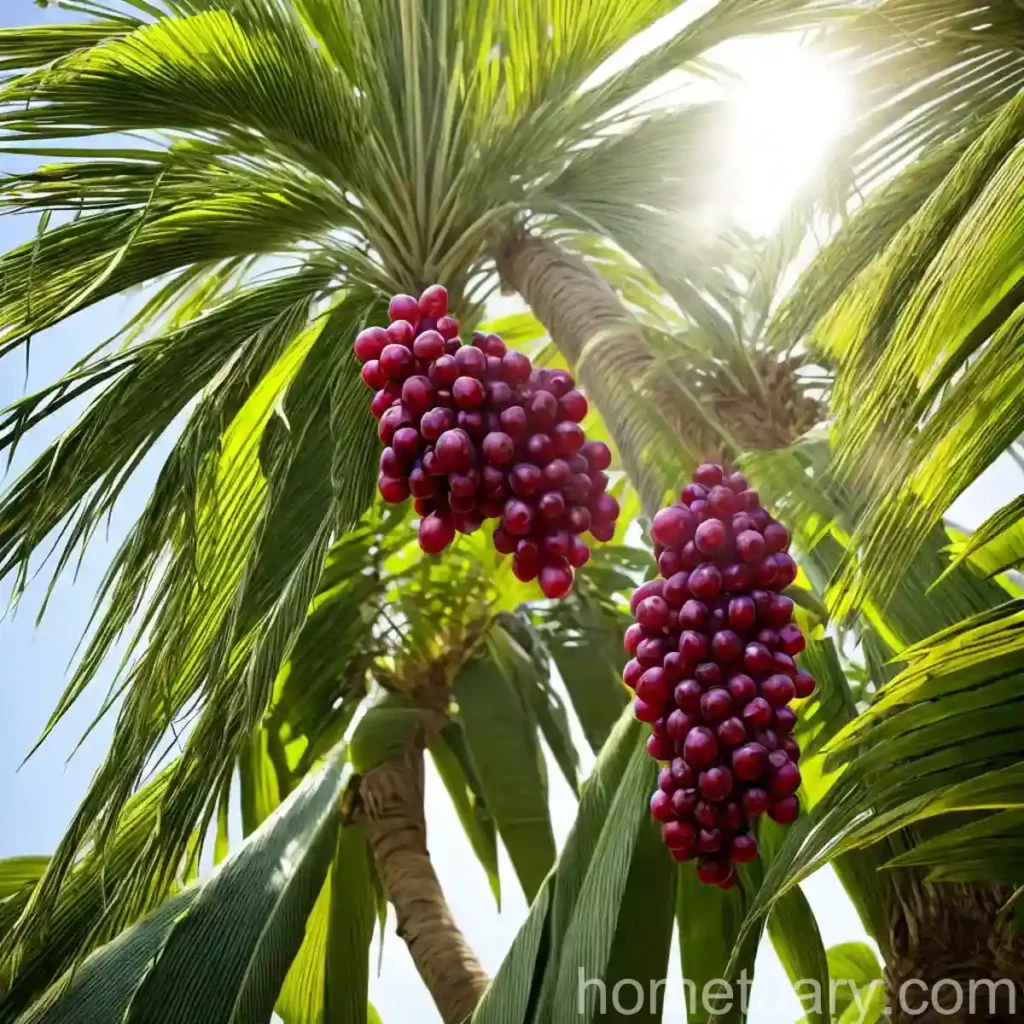Everything You Need to Know About Wine Palm (Borassus flabellifer)
The wine palm, scientifically known as Borassus flabellifer, is a majestic and versatile palm tree species that is of great cultural, economic, and ecological significance. This remarkable plant is valued for its wine-like sap, sturdy trunk, nutritious fruit, and a plethora of other uses. In this extensive guide, we will explore the various aspects of wine palm, including its cultural significance, agricultural practices, uses, and conservation.
What is Wine Palm (Borassus flabellifer)?
The wine palm, or Borassus flabellifer, is a large, perennial, evergreen palm that belongs to the family Arecaceae. With its imposing presence and multiple uses, this palm species holds immense value in many tropical regions across Asia, Africa, and the Pacific. Characterized by its robust stature with a tall, straight trunk and striking fan-shaped leaves, the wine palm is an iconic plant deeply entrenched in the cultural and ecological landscapes of its native regions.
Key Takeaways – Wine Palm (Borassus flabellifer)
Before we delve into the intricate details of wine palm cultivation and its myriad uses, let’s skim through some key takeaways about this fascinating palm species:
- Plant Name: Wine Palm (Borassus flabellifer)
- Scientific Name: Borassus flabellifer
- Common Name: Palmyra palm, toddy palm, tala palm, ron palm
- Family: Arecaceae
- Origin: Native to the Indian subcontinent and Southeast Asia
- Cultural Significance: Widely revered in traditional practices and folklore
- Key Uses: Sap tapping, fruit consumption, timber, thatching, and handicrafts
- Conservation Status: Under threat due to habitat loss and overexploitation
Now, let’s embark on a comprehensive journey to understand the various facets of wine palm – from its cultural heritage to its ecological role and commercial applications.
Wine Palm Culture
Uses
The wine palm, Borassus flabellifer, is renowned for its multifaceted utility, encompassing diverse aspects of human life and local economies. The following are key uses of wine palm:
-
Sap Tapping: The most celebrated use of wine palm is the extraction of its sap, which is a central component in the production of alcoholic beverages like toddy and palm wine. Additionally, the sap can be processed into jaggery, a traditional sugar in many South and Southeast Asian cuisines.
-
Fruit Consumption: The fibrous and nutritious fruit of the wine palm is a valuable food source, providing essential nutrients and culinary versatility. The fruit pulp can be consumed raw or used in various culinary preparations.
-
Timber: The sturdy and resilient trunk of the wine palm is a source of high-quality timber, commonly utilized in construction, furniture making, and boat building.
-
Thatching Material: The leaves of the wine palm find extensive use in traditional thatching, providing durable and weather-resistant roofing material for tropical dwellings.
-
Handicrafts: Various parts of the wine palm, including its leaves and trunk, are used in crafting intricate items such as baskets, mats, brooms, and decorative artifacts.
Water
Wine palms are well-adapted to tropical climates and thrive in regions with high humidity and ample rainfall. However, they can withstand periods of drought once established, making them resilient to fluctuating water availability.
Sunlight
As a tropical plant, wine palms thrive in full sunlight, requiring at least 6 to 8 hours of direct sunlight per day for optimal growth and development.
Fertilizer
In their natural habitat, wine palms often grow in nutrient-rich soils. When cultivated in home gardens or agricultural settings, they benefit from occasional applications of balanced fertilizers to support healthy growth.
Soil
Wine palms prefer well-draining, sandy-loam soils with a slightly acidic to neutral pH. They can tolerate a range of soil types, including sandy, loamy, and clayey soils, as long as they are well-draining to prevent waterlogging.
Pruning
Pruning of wine palm trees is primarily focused on removing old, diseased, or damaged fronds to promote air circulation and maintain an attractive appearance. Care should be taken to avoid over-pruning, as it can stress the plant and affect its overall health.
Propagation
Wine palm propagation is commonly achieved through seed germination. The seeds should be harvested from mature fruits and sown in well-draining potting mix, maintaining consistent moisture and warmth for successful germination.
Container Popularity
The wine palm’s majestic appearance and diverse uses make it a popular choice for container cultivation in tropical and subtropical regions. Its adaptability to large containers and ability to thrive in confined spaces appeal to gardeners and landscapers.
Container Common Diseases
While wine palms are relatively resistant to many common diseases, they can be susceptible to fungal infections and rot if exposed to prolonged periods of moisture or poor ventilation. Proper care and maintenance can mitigate the risk of disease in container-grown wine palms.
Disease Diagnosis
Common symptoms of disease in wine palms include yellowing or browning of fronds, wilting, and the presence of fungal growth on the trunk or leaves. A thorough diagnosis by a plant professional can help identify the specific disease and recommend appropriate treatment.
Common Pests
Wine palms may encounter pests such as mites, scale insects, and caterpillars, which can cause damage to the leaves and affect the overall health of the plant. Regular inspection and appropriate pest management techniques can help control infestations.
Botanist’s Tips
Botanist’s tips for successfully growing and caring for wine palms include:
- Proper Watering: Ensure well-draining soil and avoid waterlogged conditions, especially in container cultivation.
- Sunlight: Provide ample sunlight for healthy growth and robust frond development.
- Disease Prevention: Maintain good air circulation and promptly address any signs of disease to prevent its spread.
Fun Facts
- The sap extracted from wine palms is a key ingredient in the traditional fermentation process of palm wine.
- The distinct fan-shaped leaves of wine palms inspired the design of the state emblem of Tamil Nadu, a region in Southern India.
- The toddy obtained from wine palms is not only used for alcoholic beverages but also serves as an essential ingredient in regional cuisines for savory and sweet dishes.
Links to External Resources
For further exploration of wine palm cultivation, traditional uses, and ecological significance, the following external resources provide valuable insights:
- Borassus flabellifer – A Valuable Tropical Palm
- Cultural, Traditional and Ethnobotanical Uses of Borassus flabellifer
- Sustainable Management and Conservation of Borassus flabellifer
As we continue to explore the diverse aspects of wine palm, it’s evident that this palm species holds tremendous cultural, economic, and ecological importance. From its role in traditional folklore to its modern applications in horticulture and industry, the wine palm stands as a testament to the enduring connection between humans and plants.
Conclusion
In conclusion, the wine palm (Borassus flabellifer) embodies a rich tapestry of cultural heritage, ecological significance, and practical utility. Its distinctive characteristics, coupled with its wide-ranging uses, render it an invaluable resource for communities in tropical regions. As we strive to conserve and sustainably utilize the resources provided by wine palms, we ensure the continuation of this magnificent plant’s legacy for generations to come.















